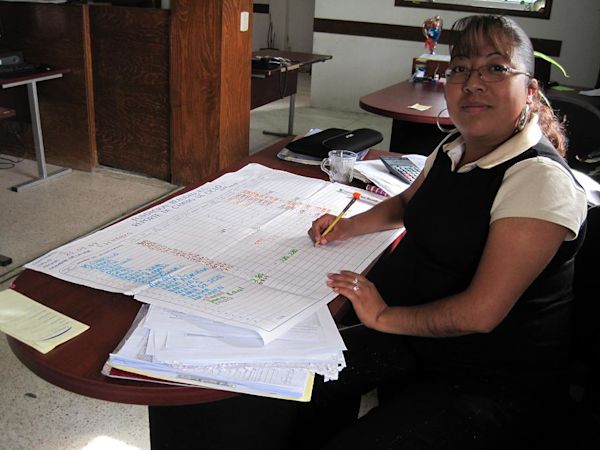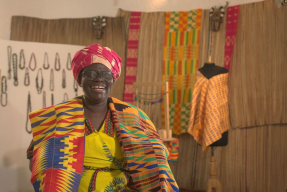
By Julia Kastner, KF9 Mexico
When Kiva first started, all of its loans were to individuals. Borrower A asked for X dollars and voila! Person A got a Kiva loan. Over time, however, Kiva’s been working with more and more MFIs, and the number of different types of loans and lending models has been increasing.
Watch a meeting of a community bank (a.k.a. UDE):
'As Kiva explains:
“In a group loan, each member of the group receives an individual loan but is part of a group of individuals bound by a group guarantee. Under this arrangement, each member of the group supports one another and is responsible for paying back the loans of their fellow group members if someone is delinquent or defaults.”
So, how is an UDE different from other group loans? Why is an UDE helpful? And how does it work?
These are the questions I’ve been asking folks here at FRAC for the last two months, and this is what I’ve learned…
Here at Fundación Realidad A.C. (FRAC) in Mexico, there aren’t any individual loans at all, just group loans, and there are three kinds: (1) Family Loans for family businesses (usually 4-5 people), (2) Solidarity Groups (also 4-5 people), and (3) Communal Banks (“Unidades de Desarollo” or UDEs for short, with 10-30 members).
At FRAC, UDEs have a governance committee of at least a president and a treasurer, and they meet more frequently than other groups (once a week or every two weeks). Each UDE has its own separate bank account, and the governance committee is responsible for making deposits when payments are due. FRAC requires that every group deposit 10% of their loan at the beginning of the transaction as a guarantee, and members who wish to reapply for larger loans in the future are required to continually make savings deposits. Many group policies, like optional additional member fees for the governance committee’s travel expenses, late payment fees, and fees for late attendance at meetings, are decided by the group through consensus at the loan contract signing. I’ve witnessed meetings of both brand new UDEs and four-year-old groups, and it’s clear that these community banks really are based on the idea of “community.” Members are usually neighbors, often a few relatives, and they have known each other for a while.

- One loan officer in a suburb of Mexico City called Chalco uses enormous sheets of paper to display her UDEs’ current financial status.
There are a few main advantages of having a really large group loan. In group loans, the whole group is responsible for repayment, so spreading out this responsibility over a larger group makes the burden smaller for each person if one member defaults. Repayment rates to FRAC may be higher, as it is less likely for a whole UDE to default. The group can even become an insurance system if group members become sick or work sours. Also, the larger the group for a loan, the lower the cost to FRAC for each member. They can have one repayment meeting for 20 members instead of 2 meetings for 10 members each, and they can rely on the governing committee to help with much of the loan administration. FRAC’s loan officers have also told me of the value of the leadership experience for UDE governors. As the president and treasurer (often women) take responsibility for the financial success of the group, they also become a community leader in general. I’ve also noticed that UDE meetings can become economic opportunities for the developing entrepreneurs – members bring their merchandise to sell during meetings (I’ve seen everything from snacks and drinks to purses and handicrafts exchanged). In one group, one member grows borrego (a lamb-like animal) and another purchases the borrego for her barbecue stand.
Unfortunately for FRAC and similar MFIs, uploading an UDE loan on Kiva can be a bit difficult. FRAC’s loan officers need to upload a lot more information for each loan (e.g. the quantity per borrower), and getting a good picture on the website can be tough, because Kiva requires that 80% of the group be present in a picture. For a group with 20 members, that’s getting 16 independent entrepreneurs in one place at the same time! When the group meets, often members cannot attend the meeting because of work, so they send a friend with their money. For Kiva, however, they have to be there in person! If you’re an avid Kiva lender, you’ve probably seen that some MFIs are starting to split members from their UDE. For example, this loan states that the borrower is part of a community bank. FRAC can’t split its loans, though, because it only tracks the group as a whole, as part of the UDE communal responsibility system.
I hope this clears up a bit about group loans and community banks. Let me know if you have any thoughts and/or questions! And for further reading on all the microfinance lending models: http://www.gdrc.org/icm/model/1-credit-model.html.
/>













